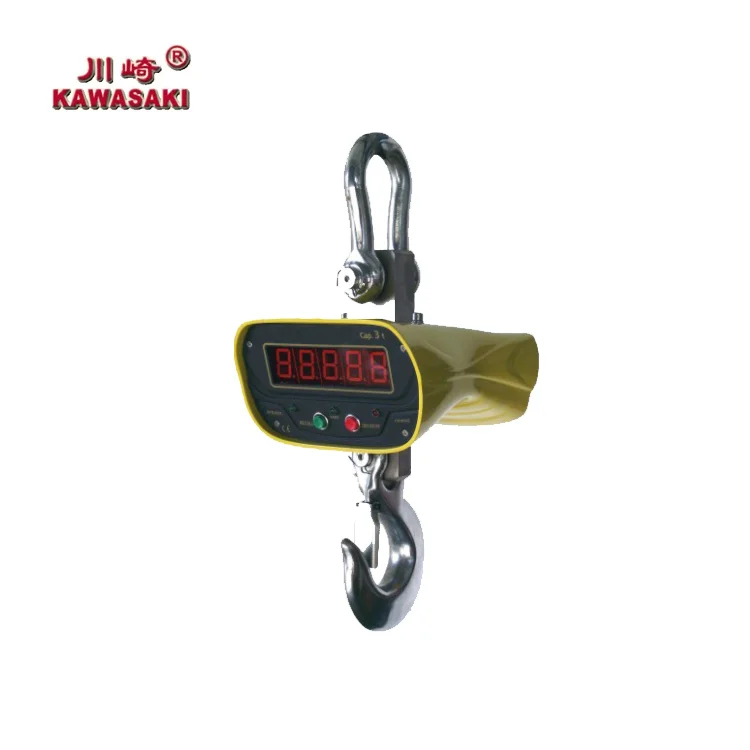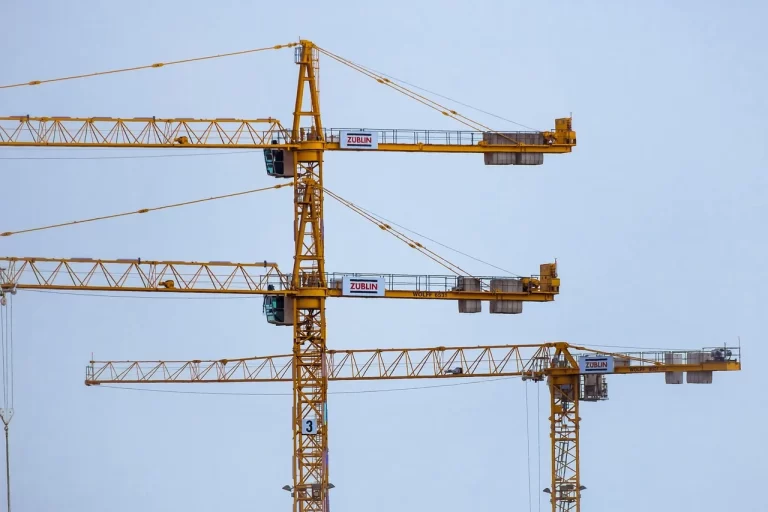Digital crane scales are super cool tools that make weighing heavy stuff easy and exact. This guide digs into their main parts, neat sensor tech, and tons of uses in different jobs. Find out how digital scales beat old analog ones with live data, wireless links, and tough builds. Learn about APOLLO’s awesome products made for manufacturing, construction, and special work. Whether you need spot-on weight checks for shipping or big lifts, digital crane scales boost safety and get work done faster across all kinds of places.
What Are the Basics of Digital Crane Scales?
Key Components of a Digital Crane Scale
A digital crane scale is a fancy gadget built to weigh heavy loads with super accuracy. Its big parts are the load cell, display screen, and signal processor. The load cell is the star, turning push or pull into an electric signal. The screen shows the weight right away, often with bright lights or clear colors so you can see it easy. The signal processor makes sure the load cell’s raw info turns into clear, steady weight numbers.
How Do Load Cells Contribute to Weight Measurement?
The load cell is super key in digital crane scales. It bends a tiny bit when something heavy sits on it. This bending changes how electricity flows, and that gets turned into weight numbers. Load cells come in types like strain gauge or hydraulic, each good for different jobs.
What Sets Analog and Digital Systems Apart?
Analog scales use old-school parts like springs and dials, which can mess up because of human mistakes or weather. Digital scales skip that by using electric sensors and processors for spot-on weights fast. Plus, digital crane scales have cool stuff like wireless connections and data saving, making them awesome for today’s work.
How Does Technology Drive Digital Crane Scales?
How Do Sensors Capture Weight Data?
Sensors in digital crane scales are made to spot super small changes in force or push on the load cell. They’re mega sensitive but tough enough to handle huge weights without losing their accuracy.
What Role Do Signal Processing Units Play?
Signal processors are a must for turning raw sensor info into stuff you can use. They clean out junk like shakes or wind, so only true weight numbers show up on the screen.
Why Is Wireless Communication Important?
Wireless links let digital crane scales send data to far-off gadgets like computers or phones. This is super handy for jobs needing live weight checks or hooking up with bigger work systems.
What Is the Operational Workflow of Digital Crane Scales?
How Is Initial Setup and Calibration Done?
Setting up a digital crane scale means hanging it tight and tweaking it to weigh right. Calibration uses known weights to fine-tune the scale’s sensitivity and zap any mistakes.
How Does Real-Time Weight Measurement Work?
Once it’s set, the scale checks weights live by reading load cell signals all the time. The processor turns that into numbers shown right away, so workers can make quick calls.
Can Data Be Logged and Integrated with Other Systems?
Fancy digital crane scales have memory to save weight records. You can keep these for later checks or link them to systems like inventory trackers using special software.

Applications of Digital Crane Scales in Various Industries
How Are Digital Crane Scales Used in Manufacturing and Logistics?
Digital crane scales are super important in manufacturing and shipping, where exact weights matter a ton. They make jobs like tracking stock, sending goods, or getting supplies smooth. For example, you can weigh raw stuff or finished products while moving them, skipping extra gear or hand math. This saves time and cuts mistakes.
In shipping, digital crane scales keep you following weight rules for trucks or ships. Overloaded rides can mean fines or crashes. By checking load weights before they roll, you keep things safe and running great.
Why Are They Important in Construction and Heavy Lifting Operations?
In construction and big lifting jobs, staying safe and exact is a big deal. Digital crane scales help a lot by giving true weights for heavy things like steel beams, concrete blocks, or machines. Knowing the real weight stops cranes or lifts from getting too full, which could cause wrecks or break gear.
Plus, these scales often have neat tricks like overload buzzers or wireless data sending. These let you watch weights from far away and act fast if something’s too heavy. This is awesome on big sites where lots of work happens at once.
How Do They Adapt to Specialized Industrial Needs?
Different jobs need different weight-checking stuff. For example, airplane makers want mega exact weights for parts that gotta meet tough rules. Meanwhile, sea jobs need scales that won’t rust from salty water.
Digital crane scales can get tweaked with stuff like heat-proof builds, waterproof cases, or fancy software links. These changes make sure the scales work great in special spots, making them handy tools for all kinds of work.
Highlighting APOLLO’s Digital Crane Scale Solutions
What Features Set APOLLO Products Apart?
When it comes to digital crane scales, APOLLO is a big name for cool ideas and trusty work. Their stuff uses top tech to stay exact even in rough spots. Big features include super sharp sensors, tough builds for long life, and easy-to-use screens.
Also, APOLLO has models with wireless links that hook right into your current systems. You can check weights live from far away using phones or computers. This is super cool for jobs needing quick data and clear work tracking.
Which Models Are Recommended for Different Industry Requirements?
APOLLO provides a range of digital crane scales tailored to meet diverse industrial needs. For heavy-duty applications like construction or shipbuilding, their high-capacity models offer exceptional performance under extreme loads. If you work in environments prone to harsh conditions, such as chemical plants or offshore platforms, their corrosion-resistant options ensure long-term reliability.
For businesses focused on logistics or warehousing, APOLLO’s compact yet powerful models deliver precise measurements without occupying excessive space. Each product is engineered with specific use cases in mind, ensuring that you find a solution perfectly aligned with your operational demands.
FAQs
Q1: Can digital crane scales handle extreme environmental conditions?
A: Yes, many models are designed with features like waterproofing and temperature resistance for reliable performance in harsh environments.
Q2: Are there portable options available?
A: Absolutely! Compact digital crane scales are available for applications requiring mobility without sacrificing accuracy.
Q3: How often should these scales be calibrated?
A: Regular calibration is recommended based on usage frequency and environmental factors to maintain optimal accuracy levels.


